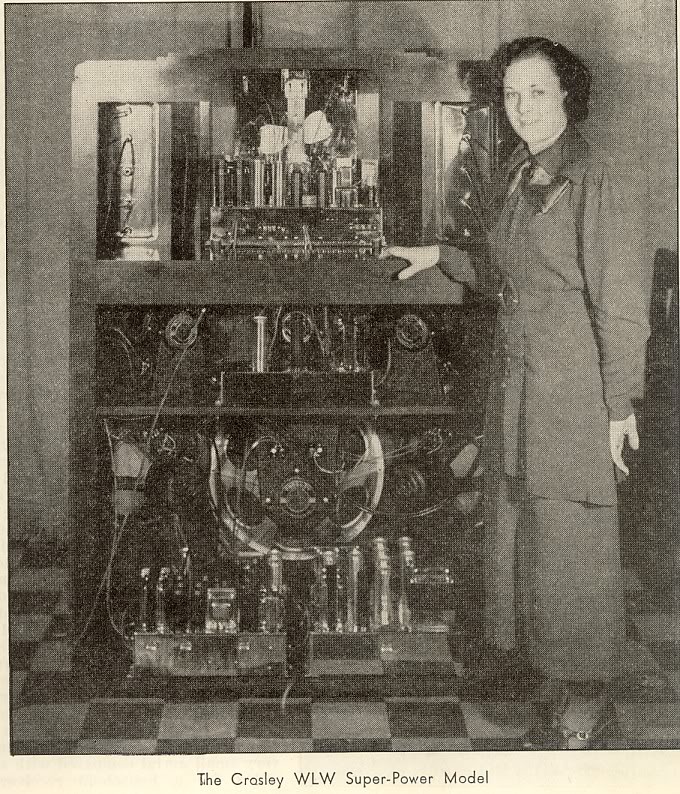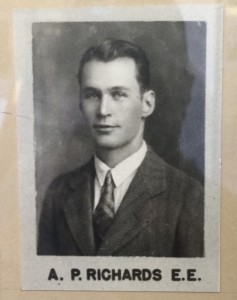In response to our recent post about the Crosley WLW Super-Power receiver, SWLing Post contributor, Larry Hagood, writes:
I am an EE student at Oklahoma State (Formerly Oklahoma A&M)–the school where the designer of the WLW [Super Power receiver], Amyle Richards, got his BSEE in 1927.
[Richards] wrote and submitted a masters thesis on the design of this radio, which earned him a PhD!).
I found a picture of him in the Engineering South building and found him in the 1927 yearbook in the library.
Anyway, the archive department located his paper on the WLW and is scanning it for me.
Many thanks to Larry for doing the research and sharing a scanned copy of Dr. Richards’ thesis about this Crosley benchmark receiver!



I first obtained that thesis from the university in 2003,
Don’t you people pay attention to bylines/ Copying my copyrighted words is not “research.”
that is my grandfather, he had many patents through the years
Jaquiline, if you want to know more (like the amount one of these radios sold for at aucton–not $163,000–just drop me a line.
Thanjks, Lawrence! I appreciate your comments.
When I wrote that article (and another) in 2004, I didn’t expect to see it copied here WITHOUT ATTRIBUTION. Whoever “Larry” is, copied my copyrighted words verbatim. My articles and books are wirrten for your enjoyment, and not for people like “Larry” to steal and claim they are the authors.
AND ALL “LARRY” HAD TO DO WAS ASK–BUT HE STOLE and preesented it as his own. I did the research, and I did the writing.
Wow, Michael sorry to hear that. how do i reach you.
Jackie (Jacqueline Richards)
In 1936 you could buy a Ford auto for $650. You could buy a 5 room and pre fab house from Sears for a little over $1400. The Colossus in today’s money would be just shy of $27,000. One was being sold on eBay in December for $166,000, you pick up. I’m waiting for the price to come down to something without zeros.
I was happy to research and write about your grandfather’s accomplishments. hrilled to learn about them. I’ve written three articles on his success.
Hi Michael,
sorry it has been a few years. I was taking care of my parents.
is there a link to the other articles you have written?
Jackie
Great to read some real electronics terminology instead of all your modern DSP/SDR mumbo-jumbo!!! (but keep it coming!)
A wonderful article and technical description a la my childhood days. Thank you Larry for showing it to us and Thomas for posting it.
Regards
Lawrence
I only glanced at it now, but that should be very interesting reading. It’s an odd time, since radio was still “primitive”, but this was “cutting edge”. Just a few a few years before, there were the famous articles in QST by James Lamb about receiver design, a big leap forward. That brought the concept of crystal filters forward, and then they were appearing in commercial receivers, almost concurrently with this receiver.
This thesis is probably equivalent to reading about upconversion and other new techniques in the early seventies, neat things that were the future. Things that existed, but weren’t “for the rest of us” until it could be made cheaper. You could sort of see the future, but the future was different when it came at affordable prices.
Think of reading this as if it was 1939, not with the hindsight of decades later.
Michael
How much was it priced at in those days? That must have been an upscale buy considering it’s size. What would it be in today’s dollars?
$1500!! You could buy a car for under $500 back then. More info: http://www.nutsvolts.com/magazine/article/the-colossus-of-radio